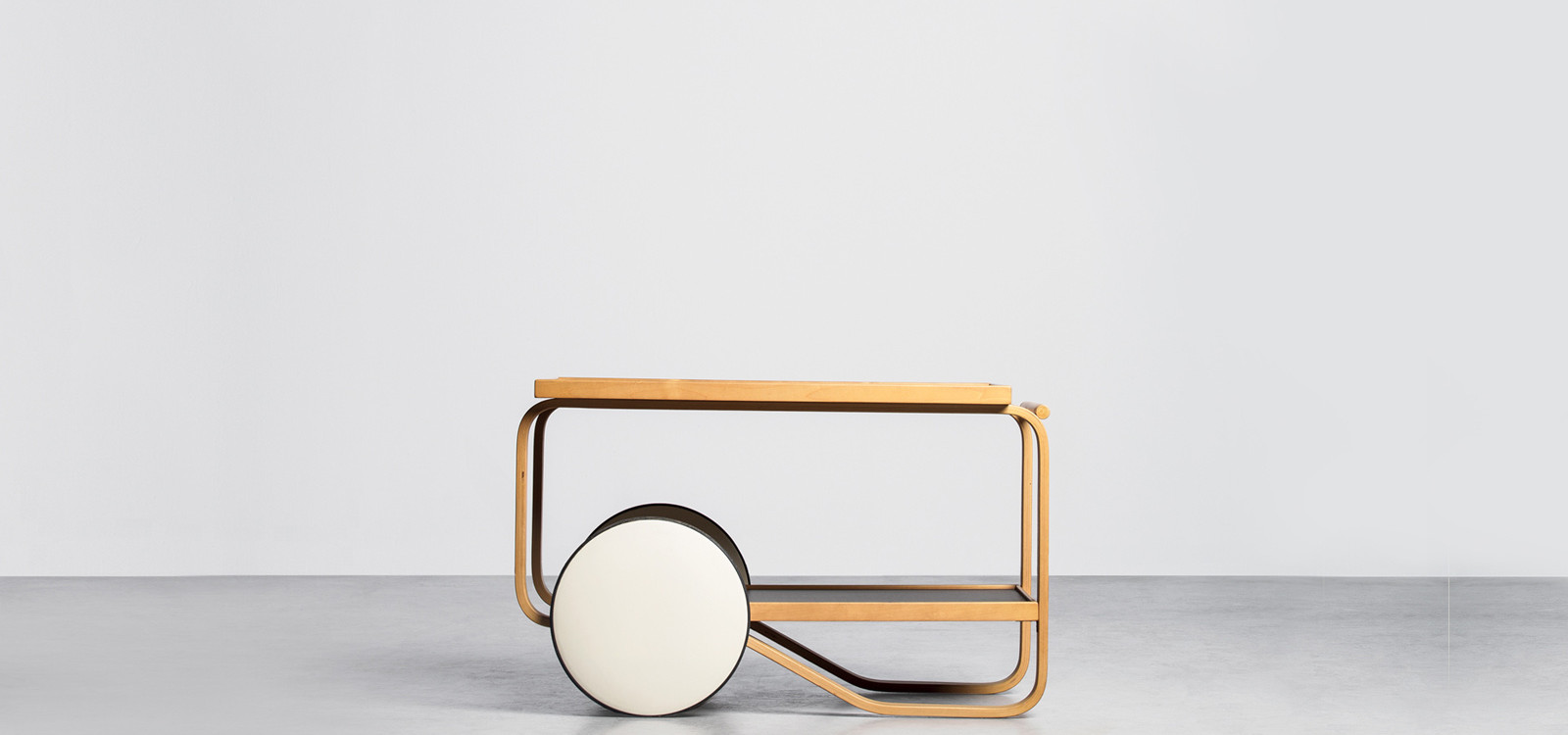Organic Design
The beginning of the 1930s saw a drastic change in the approach to design and the emergence of new visual languages that contrasted with the ideals of the Modern Movement. Organic Design was pioneered by Frank Lloyd Wright who believed in creating harmony between people and nature and regarded architecture as a means of achieving a perfect balance between the manmade and natural worlds. This belief was expressed by the use of natural materials and smooth rounded forms.
In Scandinavia this trend was overlapped by “democratic design”, conceived as a way of improving everyday life. Between the 1930s and 1950s Scandinavian design became world leader and a benchmark for other countries around the World. This approach to design was introduced to the USA by Eliel Saarinen and influenced a new generation of designers including George Nelson, Florence Schust, Charles Eames and Isamu Noguci.
In 1935 Alvar Aalto and his wife founded the company Artek so as to put into production the furniture designed for their architectural projects. The furniture was developed by exploring the expressive and structural possibilities of wood, and was produced using bending and laminating techniques.
The most famous items of furniture designed by Arne Jacobsen were also designed for site-specific architectural projects such as the “Egg” armchair, designed for the Sas Royal Hotel, Copenhagen, in 1957.

